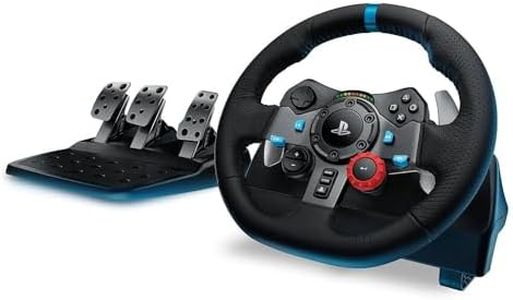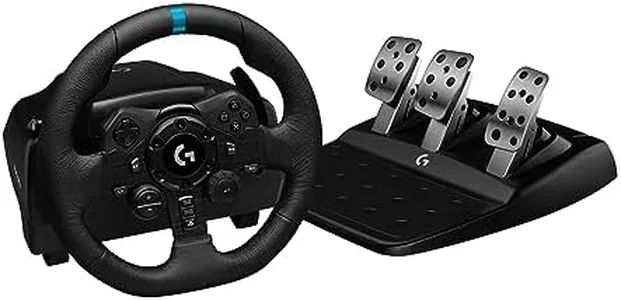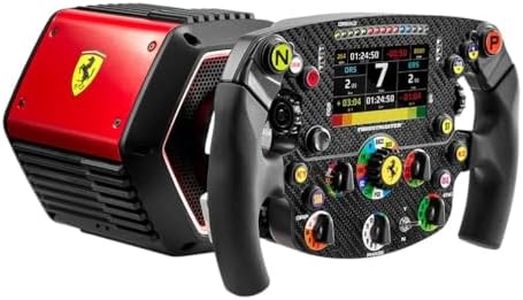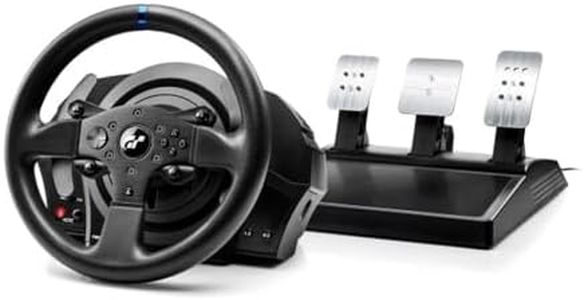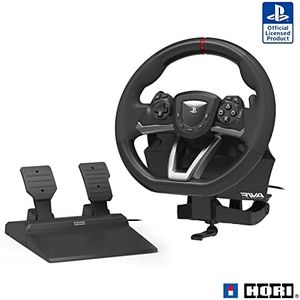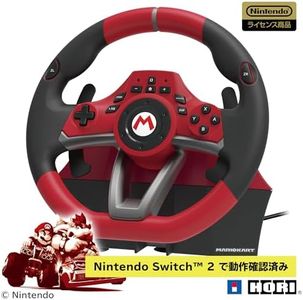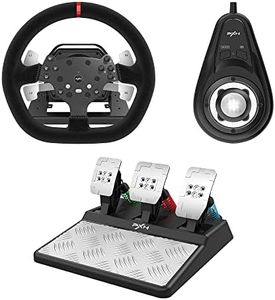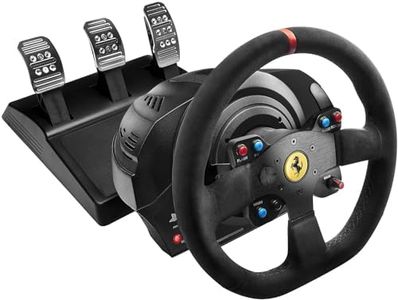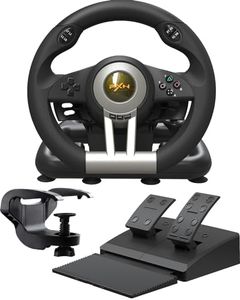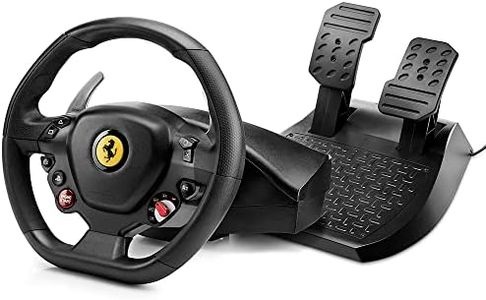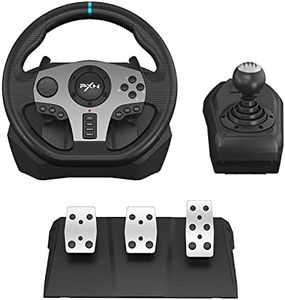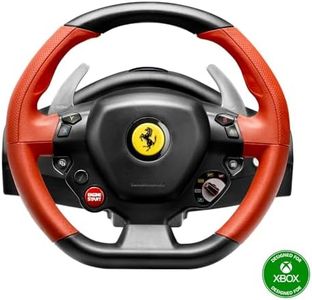We Use CookiesWe use cookies to enhance the security, performance,
functionality and for analytical and promotional activities. By continuing to browse this site you
are agreeing to our privacy policy
10 Best Racing Wheels
From leading brands and best sellers available on the web.Buying Guide for the Best Racing Wheels
Choosing the right racing wheel can make a huge difference in how much you enjoy racing games and simulations. An ideal racing wheel should feel immersive, comfortable, and responsive for your style of play, whether you're aiming to casually enjoy some racing games or looking for a realistic simulation experience. To pick the right one for you, it's important to understand the main features that influence feel, performance, and compatibility.Force FeedbackForce feedback is a system built into racing wheels that simulates the feel of the road, such as bumps, turns, and traction loss, by applying resistance and vibrations to the wheel. It is important because strong and accurate force feedback gives you a realistic sense of control and immersion, making games much more enjoyable. When comparing options, you'll find some wheels offer basic force feedback with simple resistance, while higher-end models provide very strong, smooth, and nuanced feedback with technology like belt or direct drive systems. If you mainly play arcade-style games or race casually, a basic force feedback wheel might be enough. But if you're a serious sim racer, you'll want stronger and more realistic force feedback to feel details of the car and track.
Rotation RangeThe rotation range is how far the wheel can turn from left to right, measured in degrees. This matters because different games and cars require different steering angles for realistic control. Entry-level wheels might turn 180 to 270 degrees, making them more suitable for arcade racers, while mid- and high-end wheels offer up to 900 or even 1080 degrees, matching the steering wheels in real cars. If you want realism and play a variety of racing sims, look for a wheel with a high rotation range. For casual play, a smaller range might feel more responsive and be easier to handle.
Pedals QualityRacing wheel sets often come with pedals for acceleration, brake, and sometimes clutch. The pedal quality affects both realism and durability. Basic sets use simple springs for resistance and may have fewer pedals, while advanced sets offer load cell or hydraulic technology for a more accurate and consistent feel, especially in braking. If you want realistic driving experiences or play competitive sims, look for higher-quality pedals with more precise feedback and adjustability. For entry-level or occasional use, basic pedals will suffice.
CompatibilityCompatibility refers to which gaming platforms and devices the racing wheel can be used on, such as PC, PlayStation, Xbox, or even mobile. This is crucial because not all wheels work with all systems, and some features may not be available on every platform. Always check that the wheel is fully supported by your main gaming device. If you like to play on multiple platforms, look for a model that works across them, or consider separate options for each.
Build Quality and ComfortBuild quality includes the type of materials and construction used in the wheel and pedals. Higher-end wheels often come with metal components, leather or suede grips, and robust construction, which feel better and last longer. Comfort features like wheel size, shape, ergonomics, and button layout also matter, especially if you play for long sessions. If you play frequently or value realism, prioritize wheels with solid construction and comfortable grip. For shorter or occasional play, lighter or more basic models may be comfortable enough.
Customizability and ExpandabilitySome racing wheels let you change out the rim, add extra pedals, attach a gear shifter, or mount to stands and cockpits. This is important if you plan to grow your setup in the future or want to fine-tune your experience for different games. If you see yourself upgrading or tailoring your rig, opt for a wheel with good expandability. If not, a simpler, all-in-one solution is easier to set up and use.

